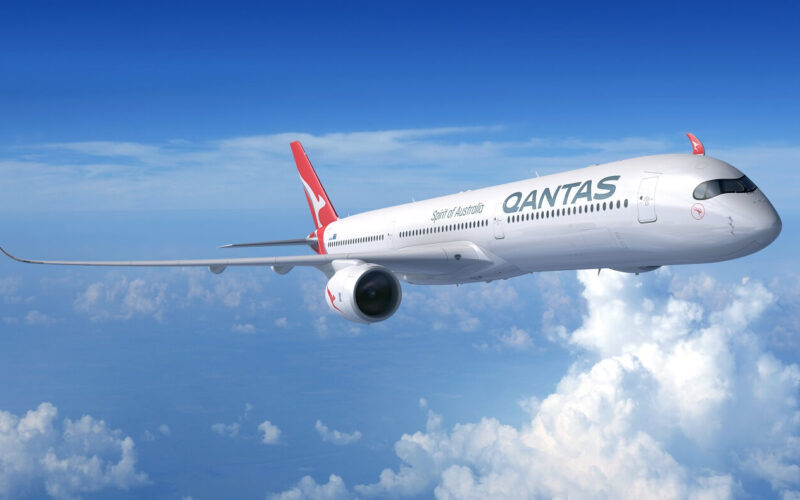Qantas picked its favorite: Airbus could be the manufacturer to break the record for the longest commercial connection in the world. The Airbus A350-1000 was selected as the “preferred aircraft” for the airline’s upcoming 20-hour flights.
The Australian carrier announced its preference for Airbus on December 13, 2019, at the expense of Boeing which had offered the 777-8. A “detailed evaluation of the Boeing 777X and Airbus A350” was made to pick the aircraft which could participate in the Project Sunrise. “The A350 is a fantastic aircraft and the agreement on the table with Airbus offers us the best possible combination of commercial conditions, energy efficiency, operating costs and customer experience,” said Qantas Group CEO Alan Joyce in a press release. He also praised the “high reliability” of the Rolls-Royce Trent XWB powering the aircraft.
There is no doubt that the uncertainties surrounding the Boeing 777X program have weighed in Qantas’ decision. Originally planned to begin during the summer of 2019, the flight test campaign of the B777-9 has not started yet. The development has been plagued with technical issues affecting both the aircraft and its engine, the GE9x. In those conditions, it seems highly unlikely that the B777-8, expected to come out of production two years after its “big brother”, would have been ready for the beginning of the flights in 2023.
No order has been signed yet, as the Project Sunrise test flights are still ongoing. The last of three Project Sunrise research flights, this time from New York to Sydney, will be conducted on December 17, 2019. Those test flights aim at studying the impact of such long flights on the health of passengers and the attention of pilots. The data should also help Qantas obtain regulatory approvals to carry that flight. According to the carrier, the Australian’s Civil Aviation Safety Authority “has provisionally advised that it sees no regulatory obstacles to the Sunrise flights.”
The final decision is expected for March 2020. But up to twelve Airbus A350-1000s could be ordered at a list price of €3.9 billion ($4.4 billion). However, the 17,000-kilometers (10,000 miles) route will require a conversion of the aircraft into an ultra-long-range variant. This was done for Singapore Airlines (SIA1) (SINGY) when it chose the A350-900ULR to serve its route between New York and Singapore in 2018. The conversion includes an increased maximum takeoff weight (MTOW) and an improved fuel capacity.
The Project Sunrise test flights should also give Qantas relevant data on the future plane configuration and cabin design. “Research flights have underscored the importance of dedicated space for stretching and movement for Economy passengers in particular, as well as the potential benefits from re-designing the service on board to actively shift people to their destination timezone,” says the airline.
For Qantas to launch its first flights between Sydney and London in the first half of 2023, it has yet to reach a wage agreement with its pilots. Negotiations with the Australian and International Pilots Association are ongoing. The company hopes to obtain an agreement for productivity and efficiency gains in exchange for an annual wage increase of 3% and promotional opportunities for its long-haul pilots.
The union had voiced its concern that the tests might not be sufficient to assess the feasibility of those flights when it comes to pilot health. The test flights “are special services restricted to a much reduced complement of passengers and crew,” said Mark Sedgwick, President of the AIPA, in a press release. “More work would need to be done on fatigue risk management, looking particularly at the cumulative effects of long range operations on crew”.

